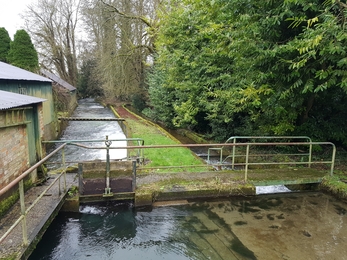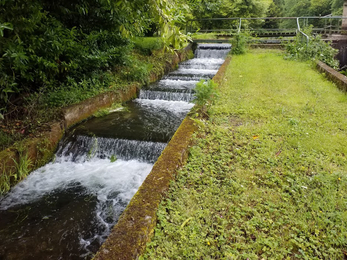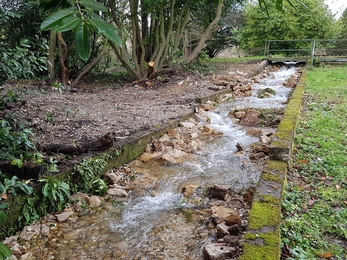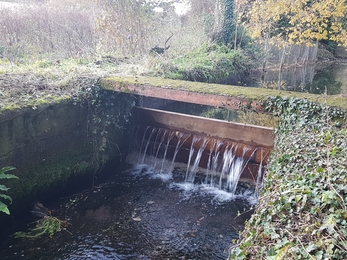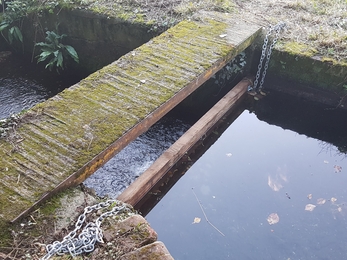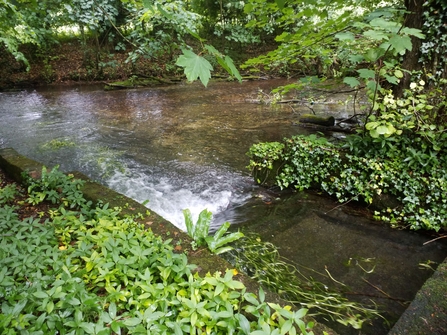Around one mile outside the village of Hurstbourne Priors, the Bourne Rivulet winds a tree‐lined path across the countryside. Like many in our region, this chalk stream has been changed by years of people living and working along its banks, sometimes to the detriment of its resident wildlife.
Chalk stream fish tend to be keen travellers, since they often need different environments for feeding, breeding, and growing to adulthood. Barriers which cut off access to these spaces can result in smaller fish populations that are vulnerable to threats like disease, pollution, and habitat loss.
On this stretch of stream there was a barrier in the form of an inactive sawmill, where the stream was historically altered to power a water wheel. While it's a valuable heritage feature, the mill separated fish in the upstream breeding areas from those in the adult habitat downstream.
The landowner was keen to address this issue in a way that retained the heritage value of the site, and Watercress and Winterbournes offered a solution. In November 2020, scheme partner Wessex Rivers Trust transformed the mill from a barrier to a bridge, giving local fish access to over 3km of chalk stream habitat.


